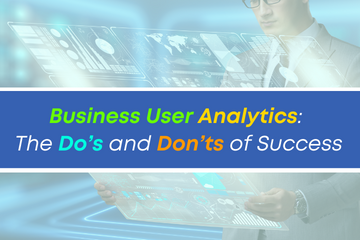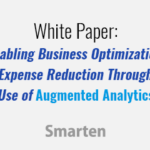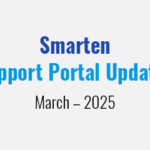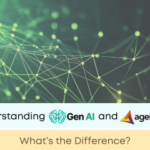
When a business decides to tackle data democratization and bring data analytics to its business users, it can often fail to comprehensively plan for success. While selecting the right augmented analytics solution is crucial, the business team must also plan for user adoption and solution acceptance. Without that key component, the enterprise is likely to spend time, resources and money and fail to achieve the desired outcome for total cost of ownership (TCO), return on investment (ROI) and user adoption.
Here are some sobering statistics:
According to technology research firm, Gartner, ‘85% of data analytics projects fail, and only 20% of analytics insight projects will deliver business outcomes.’
We advise our clients to include a comprehensive review of stakeholders and accommodate concerns and needs, including those issues that may make users or stakeholders resistant to the concept of data democratization and the use of analytics across the organization.
With appropriate planning, the business can:
- Justify investment and resources
- Provide measurements and metrics to monitor success after implementation
- Achieve data analytics and user adoption goals
- Improve data literacy across the enterprise
- Achieve continuous improvement in the organization
- Demonstrate business value and results for data analytics initiative
As with any new business process or change in workflow or enterprise culture, stakeholders must see and embrace the changes and are much more likely to do so if they see the value to their everyday role and work processes and how it will help them achieve their goals, advance their careers and positively impact communication and collaboration.

Here are some critical Do’s and Don’ts that will help your business plan and execute its data analytics and augmented analytics solution strategy to achieve optimal results.
DON’T
Don’t Focus on the Technology – While your IT team and data analytics planning team must find the right solution, and dig into the current and desired infrastructure and technology to implement software, apps and mobile access that will allow users to work with data and share and collaborate, this technical detail is NOT what your users or stakeholders want to know. Of course, they want to know the solution will work and that they will have access, but they are more focused on the benefits of the new workflow and processes and less focused on the ‘how’ and ‘what’ of the actual technology delivery.
Don’t Lecture and Promote – Rather than trying to ‘sell’ users on the importance of data analytics, provide them with business use cases, and actual work-related examples and workflow that will allow them to practice and/or see solutions to their very real problems. Take the time to understand their ‘hot buttons’ and what frustrates them today, and align your new solution and capabilities to these issues to show users how data analytics can solve their problems.
Don’t Assume Things Will Work Out on Their Own – Your team must plan for project steps and outcomes and ensure that the implementation, training and monitoring of the process is in place, so that it can adapt to changes as necessary. For a change as crucial as democratized analytics, the enterprise cannot assume that putting it on paper is enough. There must be a team in place to monitor and work with the business users, IT and other stakeholders as the roll-out takes place.
DO
Do Tell Users and Stakeholders ‘What’s in It for Them’ – Work with team members and leaders who are on the ground facing issues and challenges every day so you can translate things like ‘increased revenue’ and ‘market share’ to a more personal achievement. How will embracing data analytics and augmented analytics solutions help the business user gain visibility and advance their career? Will they get more done in less time? Might they receive a bonus for using data to make recommendations and suggestions that add value and are fact-based? Can they experience team visibility and be seen as a leader if they learn and champion data analytics?
Do Be Honest About Challenges – Change in culture and business processes can be somewhat painful. Even if the business user embraces the concept, they may have to convince others that it is a good change. There may be some hiccups or missteps in the technical shift, or it may take some time to roll out all of the components. Maybe it will take some time to find, interview and hire staff to assist with the implementation, or the team may be working with an IT consultant, and that may be new for them. Be honest about these challenges and prepare your team for them, so that they are not disappointed or frustrated and they have the tools to work with the reality of change.
Do Create a Roadmap – Integrate the technology changes and improvements with the culture change and plan a timeline and steps in the process to be sure you have considered and addressed all the issues you will face.
Do Be Clear About the Results – Each business unit, team member role and stakeholder will have a different set of concerns. Be sure to clearly state WHEN these users will see the changes, WHAT the changes will be, WHY the changes are taking place, and HOW they will be impacted, as well as WHAT BENEFITS they will achieve. Again, be sure to provide specifics that resonate with each of these stakeholders so they are more likely to collaborate and cooperate.
This article includes foundational information that will get your business started with the planning process and ensure that your data analytics project is more likely to succeed. It is important to note that there are many other details and that the best approach to this type of project is to engage an IT consultant with augmented analytics, domain and industry experience. With the right partner, the business is more likely to create a comprehensive plan and execute that plan to achieve its goals.
If your organization is considering the implementation of a data democratization and data analytics initiative, these White Papers will help you explore the issues and prepare for the challenges. ‘Accelerating Advanced Analytics In An Immature Analytics Culture’, ‘A Roadmap To ROI And User Adoption Of Augmented Analytics And BI Tools’, and ‘Integrate Augmented Analytics And Digital Transformation To Achieve Continuous Business Improvement.’
Original Post : Business User Analytics: The Do’s and Don’ts of Success!











